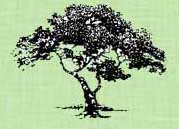Home
Atherton's Native Trees
When Gaspar de Portola’s scouting party traipsed across Atherton in November of 1769, the tree population was different from what it is today. There were no eucalyptus at all. They were yet to be imported from Australia. There were no maples, Japanese or otherwise, no birches, no magnolias, no English laurel. There were no Chinese elms or any other kind of elm. None of the fruit trees that later covered the Santa Clara Valley were growing in Atherton in 1769.
There probably were no redwoods either because Atherton’s shallow creeks were dry too much of the year and the trees were too far from the fog in the Santa Cruz mountains. The Indians did not irrigate their land with water from Hetch Hetchy the way we do today.
What de Portola’s men saw when they crossed the route of the future Atherton Avenue was landscape dominated by oaks. They were mostly Coast Live Oaks (Quercus agrifolia) and White Oaks (Quercus alba) with an occasional Blue Oak (Quercus douglasii) or Valley Oak (Quercus lobata). Some of the same oaks the men saw stand in our yards today, albeit surrounded by hundreds of other tree species from all corners of the world.
In between the oaks there were native grasses (now largely driven out by imports) and Scrub Oak (Quercus berberidifolia). Sprinkled here and there were California Buckeye (Aesculus californica), California Laurel (Umbellularia californica), and Madrone (Arbutus menziesii).
The de Portola expedition found the Indians near Atherton to be generous, making “presents of seeds (acorns) parched and made into dough and large bowls of mush or white porridge”. Acorns, and the mush and bread made from them, were a major part of the Indian diet throughout California. John Muir reported acorn bread was the most strength-giving food he had ever eaten. But don’t try eating acorns at home! When de Portola’s men ate unprepared acorns from the White Oaks they “underwent serious harm to their health”. The tannic acid in the acorns makes humans sick unless it is thoroughly leached out.
Sources:
Pavlik, Bruce, etc., Oaks of California, Cachuma Press 1991
Schoenherr, Allan A., A Natural History of California, University of California Press 1992
Companys, F. Boneau, translated by Brown, Alan K., Gaspar de Portola Explorer and Founder of California, Instituto de Estudios Ilerdenses 1983
Bakker, Elna, An Island Called California, University of California Press 1971
